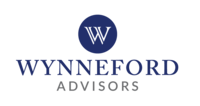PROBLEM
A multi-billion-dollar consumer products company based in Canada wished to determine whether they should continue to operate their own delivery fleet or outsource it. Factors leading to the company’s consideration of alternatives included:
- A regulatory environment makes drivers expensive and difficult to terminate for low / non-performance. On-time delivery was at 70%, well below the 95% target.
- Overall supply chain costs (of which the fleet was one small component) were running ahead of budget – 8.0% of sales vs the 7.5% target. Management was requiring cost efficiencies in every department.
- The client was a product manufacturer and distributor – not a trucking company. Running the fleet was not considered a “core competency” of the company.
- Business was growing to new locations, and the fleet would require significant investment. The client estimated that the fleet would need to increase by 50% to accommodate the growth.
APPROACH
Wynneford followed a three-step process.
1. Analyzed network.
Wynneford examined all fleet assets and drivers, origins and destinations, customer pricing, internal accounting for the fleet cost (transfer pricing), type of capacity needed, vendors in use, typical weather and customs issues, etc.
Examined current flow of fleet – lanes, performance on lanes, KPIs, business unit feedback from field interviews, static network vs flexible route planning.
Identified business unit and overall client goals, examining how the current fleet would need to change to accommodate growth, and improve on-time performance.
2. Presented framework for decision-making and decision options for management.
Wynneford used forecasted growth and existing KPIs to develop a model of the current fleet, then ran scenarios with varying routing choices to determine what efficiency opportunities may exist.
Wynneford presented options, including growing the existing fleet, augmenting the fleet with outside capacity, and a fully outsourced/dedicated fleet model. The client chose the outsource option and asked Wynneford to run a dedicated fleet RFP.
3. Executed RFP.
Wynneford examined multiple potential vendors and eventually settled on five (5) for the RFP. We ran a comprehensive RFP process, and examined the KPIs, insurance coverage, IT systems, routing capabilities, HR/driver retention policies, etc. We developed an internal stakeholder group to ensure that the client was involved with major issues but not tied down with day-to-day minutiae.
RESULTS
The client chose a vendor located in Canada to ensure familiarity and compliance with Canadian regulations. Wynneford successfully negotiated a deal whereby the client’s existing drivers and equipment were acquired by the new vendor, including their pension obligations. This resulted in a significant improvement in the savings profile and a very efficient implementation. Wynneford worked with the vendor to ensure the issues that caused the 70% on-time delivery rate would be addressed. By the third month of operations, the on-time delivery was 95%.
Ultimately, the client offloaded a low-performing business unit, increased customer satisfaction through better delivery performance, eliminated the ongoing investment needed to maintain a flee, transferred long-term pension obligations, and provided a work environment for its drivers that offered greater opportunities for advancement.


Wynneford Advisors helps you analyze your freight spend, create strategies to enhance performance and service, and then manage the implementation. We offer solutions for mergers and acquisitions, logistics streamlining, internal fleet optimization, and detailed freight analysis.
Work with a responsive and engaged transportation consultant team.





